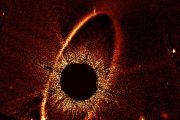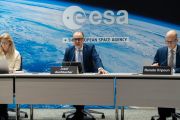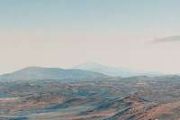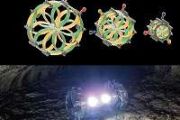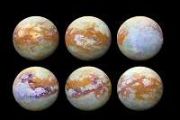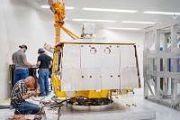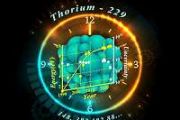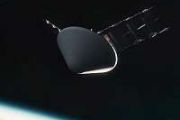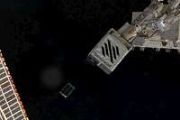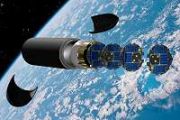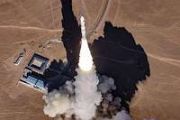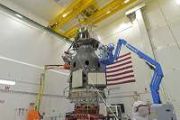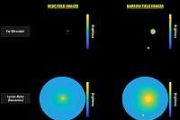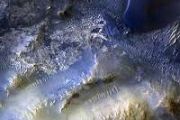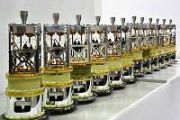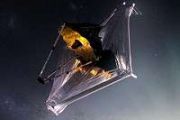
Copernical Team
SpaceX launches 54 Starlink communication satellites
 SpaceX launched a Falcon 9 rocket in Florida on Saturday carrying 54 Starlink Internet satellites.
The Falcon 9 was launched from Kennedy Space Center and was making its 15th flight to space. The rocket's first stage returned to Earth just under nine minutes later, landing on a SpaceX robotic drone ship stationed in the Atlantic Ocean off the Florida coast.
The satellites will ad
SpaceX launched a Falcon 9 rocket in Florida on Saturday carrying 54 Starlink Internet satellites.
The Falcon 9 was launched from Kennedy Space Center and was making its 15th flight to space. The rocket's first stage returned to Earth just under nine minutes later, landing on a SpaceX robotic drone ship stationed in the Atlantic Ocean off the Florida coast.
The satellites will ad Rocket Lab scrubs first U.S. Electron launch over high winds
 U.S. launch and space systems company Rocket Lab called off its Sunday evening liftoff of its first Electron rocket mission from the United States over upper-level high winds.
The launch at NASA's Wallops Flight Facility in Virginia was scrubbed with less than a dozen minutes left in the count down.
"All stations, unfortunately, we are going to be no go today," the launch directo
U.S. launch and space systems company Rocket Lab called off its Sunday evening liftoff of its first Electron rocket mission from the United States over upper-level high winds.
The launch at NASA's Wallops Flight Facility in Virginia was scrubbed with less than a dozen minutes left in the count down.
"All stations, unfortunately, we are going to be no go today," the launch directo Space crew using robotic arm to inspect damaged capsule
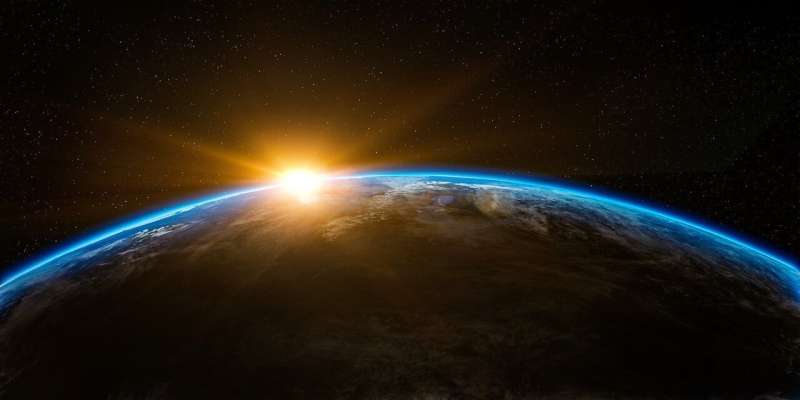
The crew of the International Space Station on Sunday was inspecting an attached Russian space capsule that may have been damaged by a micrometeorite, while ground controllers considered whether to send up a replacement spaceship to ferry some of them home.
Russia's space corporation, Roscosmos, said the crew was using a camera on a Canadian-built robotic arm to capture images of the Soyuz MS-22 where a coolant leak was detected last Wednesday night, U.S. time. After the images are transmitted to the ground on Monday, space officials will analyze them—along with other data about the problem—by month's end and decide on next steps.
One option, Roscomos said, is to expedite the delivery of another Soyuz capsule to the space station. Workers at the Baikonur Cosmodrome in Kazakhstan are preparing to launch Soyuz MS-23 to the space station next March with three crew members but could send it up sooner without a crew. That would allow some of the seven crew now on the space station to return home.
A Russian space official said last Thursday a micrometeorite could have caused the leak.
New study confirms the light from outside our galaxy brighter than expected
 Scientists analyzed new measurements showing that the light emitted by stars outside our galaxy is two to three times brighter than the light from known populations of galaxies, challenging assumptions about the number and environment of stars are in the universe. Results of the study led by researchers at Rochester Institute of Technology have been posted to ArXiv and accepted for publication i
Scientists analyzed new measurements showing that the light emitted by stars outside our galaxy is two to three times brighter than the light from known populations of galaxies, challenging assumptions about the number and environment of stars are in the universe. Results of the study led by researchers at Rochester Institute of Technology have been posted to ArXiv and accepted for publication i Two exoplanets may be mostly water, Hubble and Spitzer find
 A team led by researchers at the University of Montreal has found evidence that two exoplanets orbiting a red dwarf star are "water worlds," where water makes up a large fraction of the entire planet. These worlds, located in a planetary system 218 light-years away in the constellation Lyra, are unlike any planet found in our solar system.
The team, led by Caroline Piaulet of the Trottier
A team led by researchers at the University of Montreal has found evidence that two exoplanets orbiting a red dwarf star are "water worlds," where water makes up a large fraction of the entire planet. These worlds, located in a planetary system 218 light-years away in the constellation Lyra, are unlike any planet found in our solar system.
The team, led by Caroline Piaulet of the Trottier ESPRESSO and CARMENES discover two potentially habitable exo-Earths around a star near the Sun
 "Nature seems bent on showing us that Earth-like planets are very common. With these two we now know 7 in planetary systems quite near to the Sun" explains Alejandro Suarez Mascareno, an IAC researcher, who is the first author of the study accepted for publication in Astronomy and Astrophysics.
The newly discovered planets orbit the star GJ 1002, which is at a distance of less than 16 ligh
"Nature seems bent on showing us that Earth-like planets are very common. With these two we now know 7 in planetary systems quite near to the Sun" explains Alejandro Suarez Mascareno, an IAC researcher, who is the first author of the study accepted for publication in Astronomy and Astrophysics.
The newly discovered planets orbit the star GJ 1002, which is at a distance of less than 16 ligh Comet impacts could bring ingredients for life to Europa's ocean
 Comet strikes on Jupiter's moon Europa could help transport critical ingredients for life found on the moon's surface to its hidden ocean of liquid water - even if the impacts don't punch completely through the moon's icy shell.
The discovery comes from a study led by researchers at The University of Texas at Austin, where researchers developed a computer model to observe what happens afte
Comet strikes on Jupiter's moon Europa could help transport critical ingredients for life found on the moon's surface to its hidden ocean of liquid water - even if the impacts don't punch completely through the moon's icy shell.
The discovery comes from a study led by researchers at The University of Texas at Austin, where researchers developed a computer model to observe what happens afte Perseverance rover to begin building Martian sample depot
 In the coming days, NASA's Perseverance rover is expected to begin building the first sample depot on another world. This will mark a crucial milestone in the NASA-ESA (European Space Agency) Mars Sample Return campaign, which aims to bring Mars samples to Earth for closer study.
The depot-building process starts when the rover drops one of its titanium sample tubes carrying a chalk-size c
In the coming days, NASA's Perseverance rover is expected to begin building the first sample depot on another world. This will mark a crucial milestone in the NASA-ESA (European Space Agency) Mars Sample Return campaign, which aims to bring Mars samples to Earth for closer study.
The depot-building process starts when the rover drops one of its titanium sample tubes carrying a chalk-size c NASA developing AI to steer using landmarks on the Moon
 Much like how familiar landmarks can give travelers a sense of direction when their smart phones lose their lock on GPS signals, a NASA engineer is teaching a machine to use features on the Moon's horizon to navigate across the lunar surface.
"For safety and science geotagging, it's important for explorers to know exactly where they are as they explore the lunar landscape," said Alvin Yew,
Much like how familiar landmarks can give travelers a sense of direction when their smart phones lose their lock on GPS signals, a NASA engineer is teaching a machine to use features on the Moon's horizon to navigate across the lunar surface.
"For safety and science geotagging, it's important for explorers to know exactly where they are as they explore the lunar landscape," said Alvin Yew, Seismic waves revealed possible past meteoroid impact
 The largest earthquake ever detected on Mars has revealed layers in its crust that could indicate past collision with a massive object, such as a meteoroid. Previous data has suggested the past occurrence of a large impact, and the findings offer evidence that might support this hypothesis.
The research, led by UCLA planetary scientists and published in two papers in Geophysical Research L
The largest earthquake ever detected on Mars has revealed layers in its crust that could indicate past collision with a massive object, such as a meteoroid. Previous data has suggested the past occurrence of a large impact, and the findings offer evidence that might support this hypothesis.
The research, led by UCLA planetary scientists and published in two papers in Geophysical Research L 

